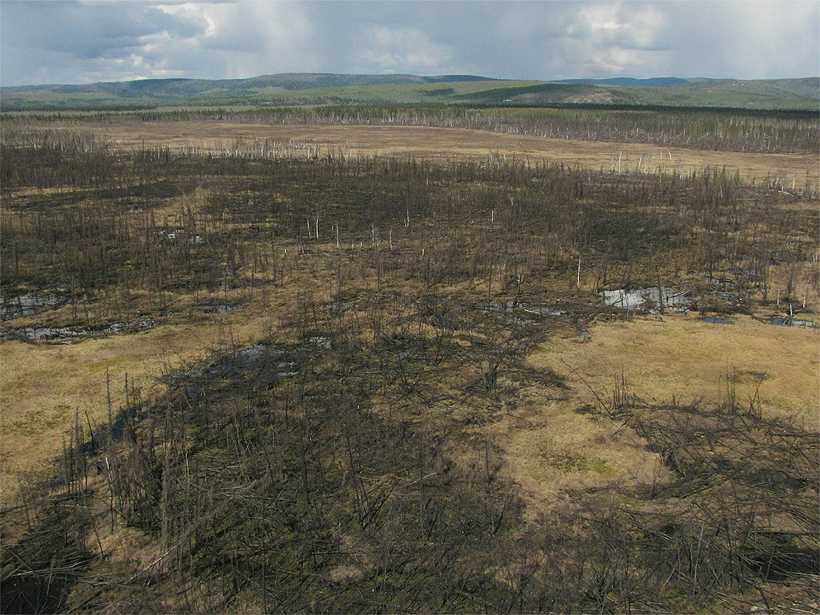Source: Journal of Geophysical Research: Biogeosciences
At high latitudes, permafrost—ground that remains frozen year round—sequesters massive amounts of carbon, making it an important variable in global climate dynamics. As Earth continues to warm, permafrost extent is decreasing, and the thaw is changing the associated surface ecosystems. Here Brown et al. examine the impact of wildfires on permafrost in the Tanana Flats region of Alaska.
Using a suite of field experiments, such as core sampling, in combination with computer modeling, the authors examine wildfires in the region from 1930 to 2010 and analyze their impact on permafrost and the surrounding ecosystem. According to the team, fires played a significant role in the degradation of permafrost in the area, and in some instances, the resulting thaw was enough to permanently alter the composition of the affected landscape.
Because ice occupies a larger volume than liquid water and has far greater mechanical strength, when it melts, the soil tends to settle and collapse. In areas like the Tanana Flats, this collapse can cause the ground level to recede below the local water level, thereby transforming a forested terrestrial area into a boggy wetland. Once this transition occurs, the liquid water aggregates in pools and can promote even more thawing.
Fires can rapidly accelerate the thawing of permafrost, but the team concludes that whether or not an ecosystem recovers (refreezes) following the disturbance is subject to several variables. Fire severity is a major driver: The extent of permafrost degradation is dependent on the depth of burning into the insulating organic surface layers. The team’s analysis also shows that vulnerability of permafrost after a wildfire increased during the 1970s—concurrent with an overall increase in air temperatures. Because thawing begets more thawing in these ecosystems, the team suggests that a climatic tipping point may be on the horizon for the Alaskan interior, especially if global temperatures continue to rise and wildfires become more abundant. (Journal of Geophysical Research: Biogeosciences, doi:10.1002/2015JG003033, 2015)
—David Shultz, Freelance Writer
Citation: Shultz, D. (2015), Alaskan wildfires influence permafrost recovery, Eos, 96, doi:10.1029/2015EO040429. Published on 1 December 2015.
Text © 2015. The authors. CC BY-NC 3.0
Except where otherwise noted, images are subject to copyright. Any reuse without express permission from the copyright owner is prohibited.

